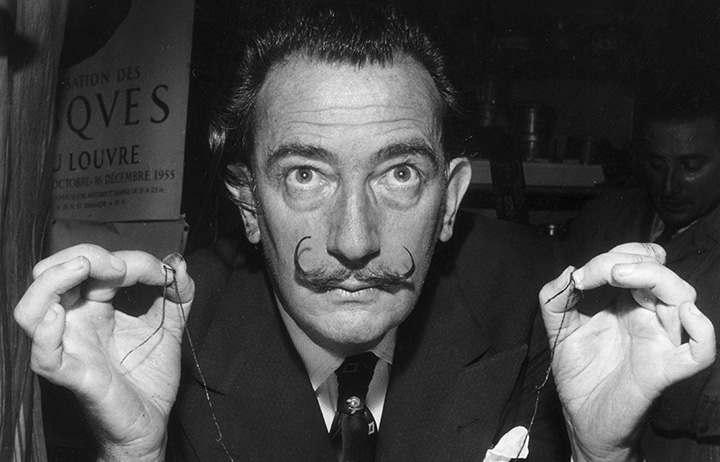
Dalí Talks About His Iconic 'Aggressive' Mustache
Salvador Dalí, one of the most enigmatic and eccentric artists of the 20th century, is known not only for his surrealist paintings but also for his iconic mustache. This flamboyant facial hair became a symbol of his unique personality and artistic vision. In numerous interviews and writings, Dalí himself has discussed the significance of his 'aggressive' mustache, revealing its deeper meaning and the deliberate choices behind its appearance.
The Genesis of the Mustache
Dalí's mustache did not appear overnight. It was a carefully crafted element of his public persona, evolving over time. In his early days, Dalí sported a more conventional mustache, but as his fame and self-confidence grew, so did the grandeur of his facial hair. By the 1940s, the mustache had taken on its iconic shape: sharp, elongated, and waxed to perfection, often pointing skyward like two antennae.
In his autobiography, The Secret Life of Salvador Dalí, the artist recounts the inspiration behind his mustache. He admired the mustache of the Spanish Golden Age painter Diego Velázquez and saw it as a symbol of artistic genius and Spanish heritage. Dalí sought to emulate and surpass Velázquez, creating a mustache that was even more exaggerated and expressive.
A Symbol of Individuality and Defiance
For Dalí, the mustache was more than a mere fashion statement. It was a symbol of his individuality and defiance against societal norms. In an interview with Paris Match magazine in 1954, Dalí famously declared, "Since I don't smoke, I decided to grow a mustache—it is better for the health." This statement, while humorous, also underscored his rejection of conventional habits and his desire to stand out in a world that often values conformity.
The mustache became a visual representation of Dalí's philosophy of life and art. It was a proclamation of his belief in the power of personal expression and the importance of remaining true to oneself. This was a crucial aspect of Dalí's surrealist ethos, which championed the exploration of the subconscious mind and the rejection of rationalism and traditional aesthetics.
The Mustache as Performance Art
Dalí's mustache was not static; it was a dynamic and evolving work of art in itself. He would frequently experiment with its shape and presentation, using various grooming techniques and products to achieve the desired effect. In some photographs, the mustache appears almost comically exaggerated, with long, thin points extending far beyond the width of his face. In others, it is more restrained, but always meticulously groomed and styled.
Dalí's mustache was also a tool for performance. He would often incorporate it into his public appearances and interactions, using it to engage and captivate his audience. In one famous incident, Dalí appeared on American television and used his mustache to hold a flower, demonstrating both his dexterity and his flair for the dramatic.
The Legacy of Dalí's Mustache
Even after his death in 1989, Dalí's mustache continues to be a powerful symbol of his legacy. It has been immortalized in countless photographs, paintings, and even merchandise, ensuring that the artist's distinctive appearance remains etched in the public consciousness.
In 2017, Dalí's body was exhumed for a paternity test, and to the astonishment of the forensic team, his mustache was found to be perfectly preserved. This extraordinary detail only added to the enduring mystique of the artist and his carefully crafted image.
Dalí's mustache has inspired generations of artists and admirers, serving as a reminder of the power of personal expression and the importance of challenging societal norms. It is a testament to Dalí's genius that something as simple as facial hair could become such a profound and lasting symbol.
Conclusion
Salvador Dalí's 'aggressive' mustache is more than just a quirky aspect of his appearance; it is a deeply symbolic and deliberate element of his artistic persona. Through his mustache, Dalí communicated his individuality, defiance, and commitment to the surrealist movement. It was a tool for performance, a symbol of his legacy, and a testament to the enduring power of personal expression. In discussing his mustache, Dalí offers us a glimpse into the mind of a true artistic visionary, reminding us that sometimes, the smallest details can have the greatest impact.


0 Comments